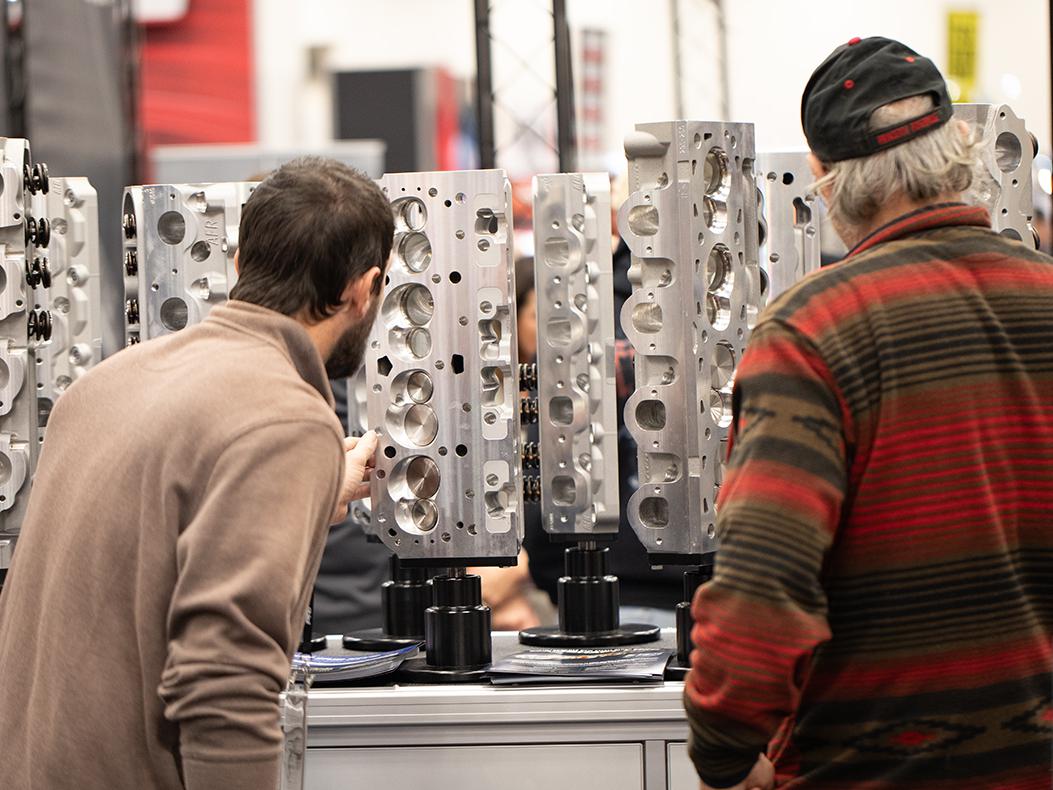Driveline Components: Turn-By-Turn Connections
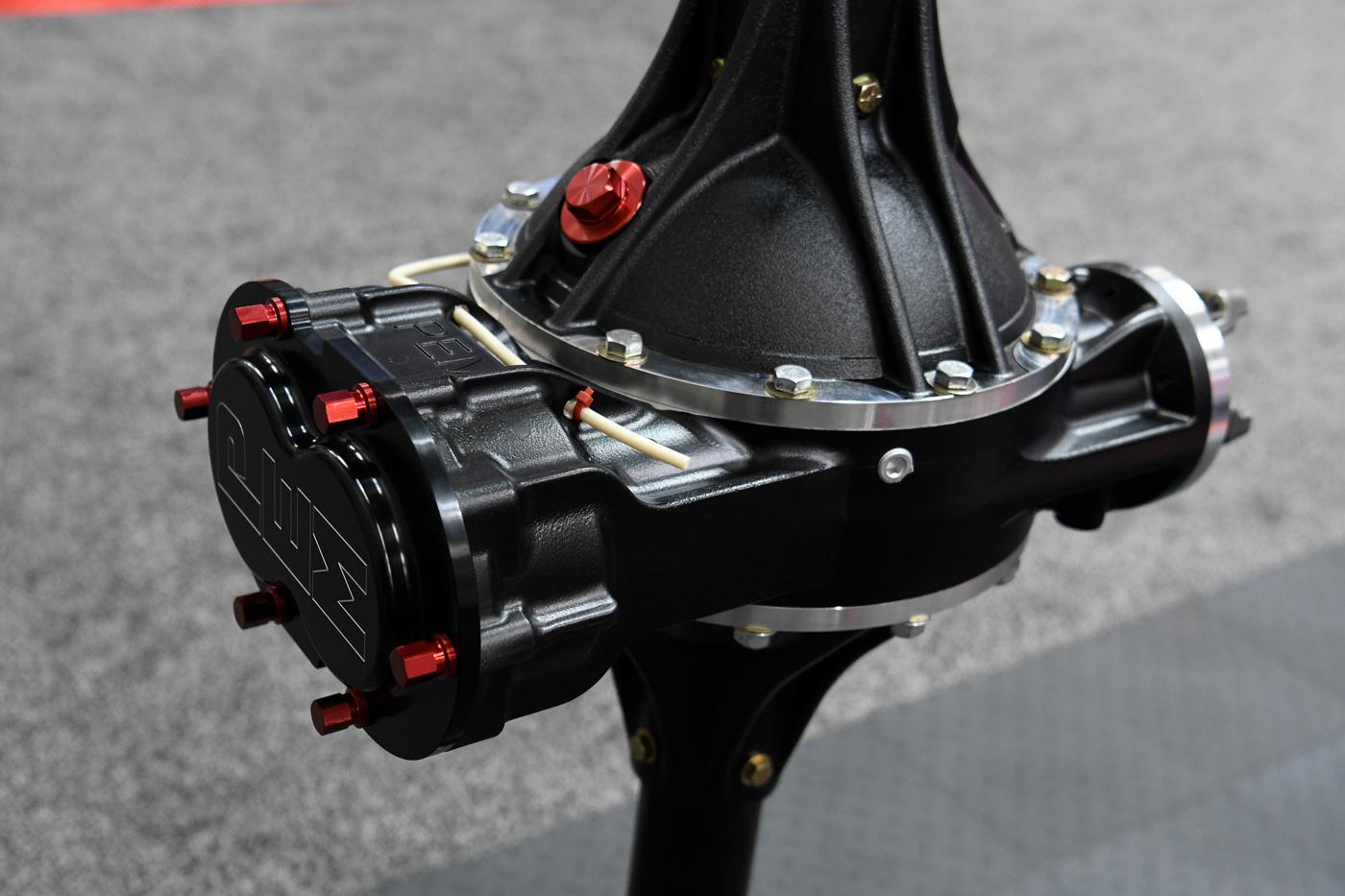
Playing a critical role in the success of any race car, driveline technology is under constant development, with incremental improvements steadily adding up over time to produce spectacular results.
In the shadows of glory lies the stuff of success. While everyone dreams and drools at the sight of wicked V8s bristling with shiny turbos, snaky headers, and sparkly chrome, driveline components generally don’t inspire that kind of lusty admiration.
They just do their job. If they do it right, no one thinks much about them. Races are won, champagne corks pop, and cars are loaded onto trailers without so much as a nod to the transmission, driveshaft, and rearend.
But on the way to the winner’s circle, these unsung heroes get countless hours of attention, with some of the brightest minds in the business ruminating endlessly on how to improve them. More efficiency. Lighter weight. Lower cost. The list goes on and on.
To keep up with these developments, we called on leading driveline experts to find out what they’re working on, what they see racers using, and what they predict for the future. Their input yielded 14 thought-provoking trends to watch in the year ahead.
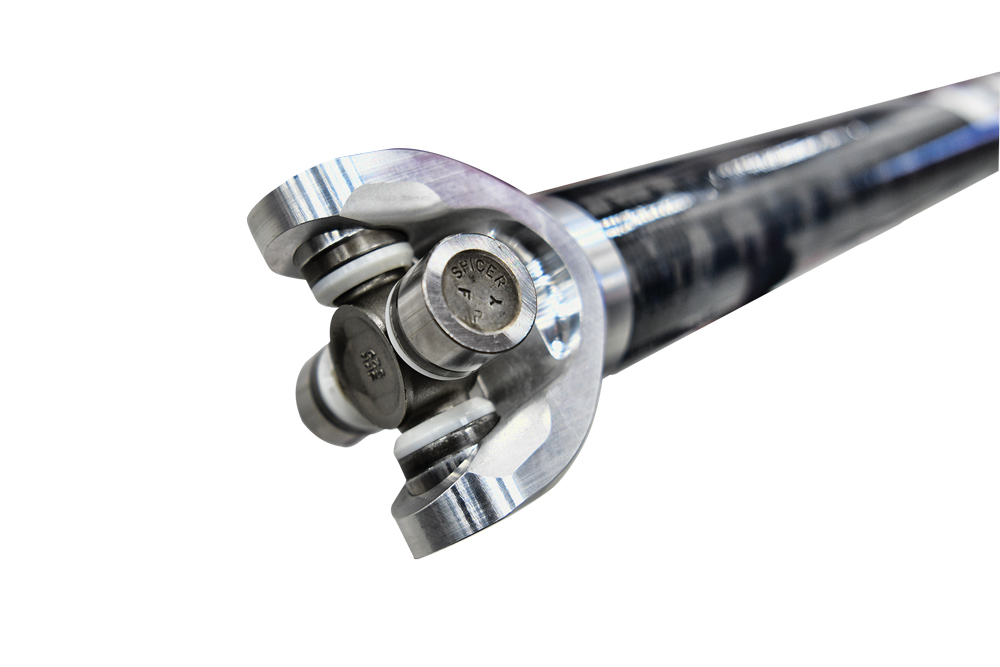
1. Torque Converter Tuning
With the increasing sophistication of modern drag cars, racers are now seeing a greater need to quickly and freely tailor torque converters for different tracks, operating conditions, and car setups. Bolt-together torque converters allow them to access the inner workings of the converter and switch out components without having to send it to the manufacturer or bring it to a specialist’s shop.
Although bolt-together torque converters aren’t new—they were introduced more than three decades ago—most racers have so far been reluctant to delve into the complexities of tuning them. Manufacturers are now responding to this need with improved bolt-together torque converters, along with increased tech support to help racers grapple with the finer points of choosing stators, turbines, and other pieces.
“Torque converters are like black magic,” said Krista Baldwin of Wharton Automotive Group, Anaheim, California, which includes McLeod Racing, FTI Performance, and Silver Sport Transmissions. “They’re a little bit more difficult than some other systems in a car. But a racer should be able to tune the converter for specific conditions. With our new Gen 3 XPM torque converter, a racer can say, ‘Hey, I need my torque converter like this, because I have this engine combination this weekend.’ And we’re able to help change it on the fly. Our techs are racers. They’ve seen different conditions themselves, so they’re able to accurately say, ‘Okay, this is the baseline where you need to start.’”
2. Better Universal Joints
Universal joints have always been one of the most vulnerable parts in drivelines, particularly as horsepower climbs to stratospheric levels in many racing series. To combat the problem, manufacturers are working on improvements in universal-joint design and materials.
“It’s crazy, because it’s been more than 20 years since anyone’s done anything different with U-joints,” observed Mike Bennett of Dynamic Drivelines, Des Moines, Iowa. “And that’s always been the weak link. So we’ve definitely stepped up the game on universal joints. Within the last year, we’ve worked with Neapco as our supplier. We have a new U-joint coming out that’s one of the best I’ve ever seen. We changed the material in it, and we did some different stuff with the way the body was designed.”
3. Constant-Velocity (CV) Joints for Sprint Cars
Sprint cars are somewhat unique in that they use a torque-tube setup instead of an open driveline. They also endure levels of punishment that many other cars don’t. In response, AL Driveline in East Berlin, Pennsylvania, has taken the bold step of introducing constant-velocity joints that replace universal joints on sprint cars.
“You cannot fake the science as to how a U-joint functions,” explained Aaron Long of AL Driveline. “As soon as it sees any articulation, the output speed is varying from the input speed, so it’s really beating itself to death from the first time it’s used. That’s why there are no universal joints in front-wheel-drive vehicles. But CV joints don’t care what angle they’re at.
“I feel you’re looking at the future of sprint car drivetrain technology,” continued Long. “For sure there’s never been a smoother system ever created for sprint cars. I gave the first one to a customer to try in 2018, and that original CV joint is still going. It’ll run this year with a 410 team here in central Pennsylvania. It’s approaching 150 races.”
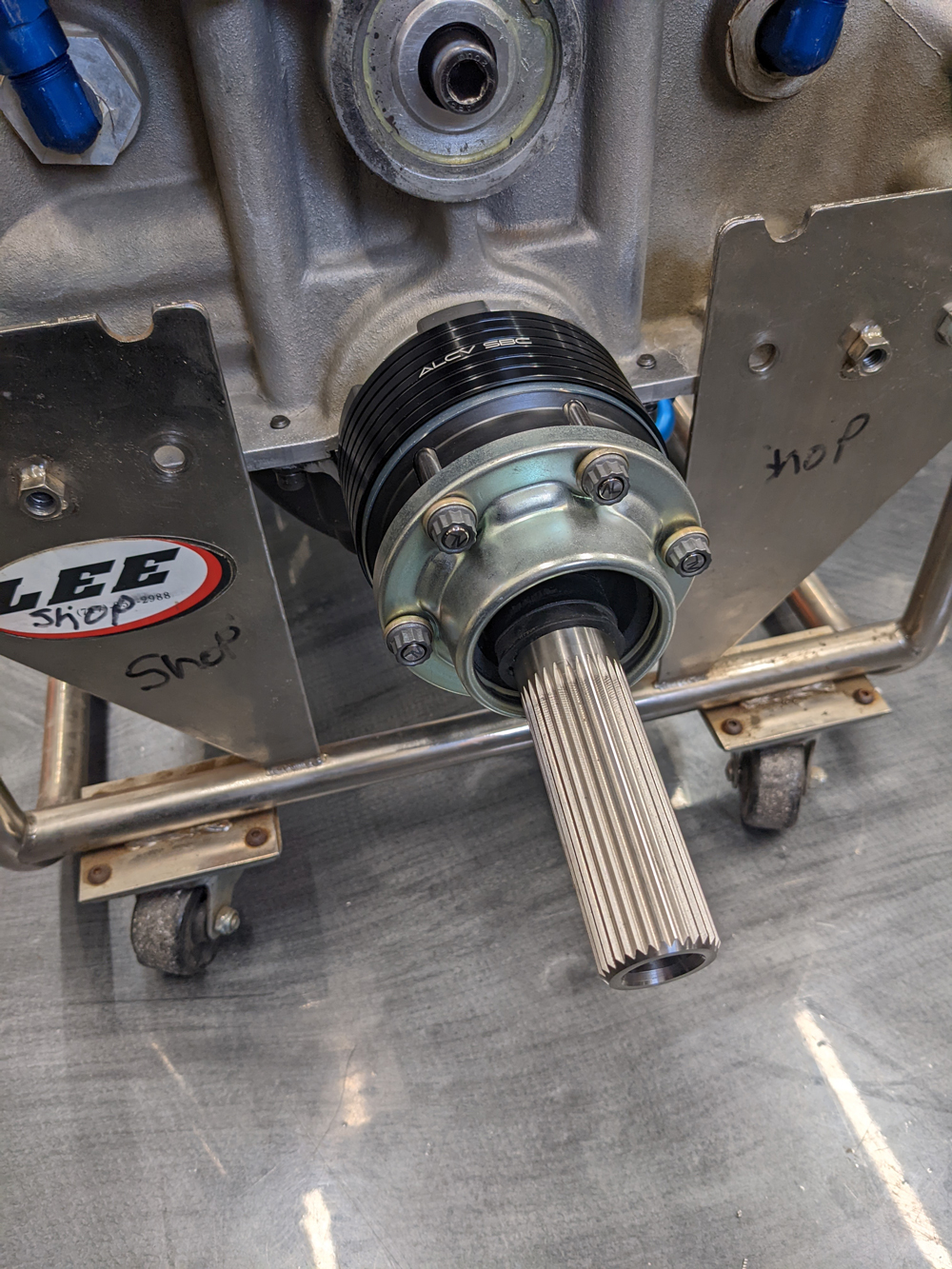
4. Carbon-Fiber Driveshafts
Steel and other materials will probably always have a place in driveshaft construction, but carbon fiber is steadily gaining popularity. Carbon-fiber driveshafts offer the advantage of light weight, along with greater safety because of their tendency to splinter into relatively harmless fragments if they fail.
For this reason, some sources say more rule makers should make carbon-fiber driveshafts mandatory. “I keep beating on this, but I’d like to see the industry do more carbon fiber, just because of the safety factor,” said Dynamic Drivelines’ Bennett. “I think we’re getting closer. A lot of the sanctioning bodies are figuring it out. The cost has always been an issue, too. If we can keep the cost down on them, we’ll have a better shot of getting them into everything.”
5. Big-Diameter Titanium Sprint Car Driveshafts
Titanium driveshafts are a popular way to save weight on sprint cars, and they’re certainly nothing new. But now, AL Driveline has introduced a larger diameter version, which Long said reduces wear on universal joints and other components.
“The problem with titanium is that it’s so flexible,” he explained. “Using a small-diameter titanium driveshaft with the way these 410 engines run these days produces a significant amount of whipping effect. There have been times where we can actually see rub marks where a traditional standard-diameter driveshaft will rub the inside of the torque tube.
“When the driveshaft whips like a jump rope, it induces fatigue into not only the base flange that holds the U-joint to the engine, but also to the female drive yoke,” added Long. “This is especially true at bigger race tracks, where you have a lot of chassis flex. Our driveshaft design increases the longevity of traditional universal joints by minimizing the amount of driveshaft whipping effects.”
6. Aluminum Sprint Car Driveshafts
Alongside more established titanium options, aluminum driveshafts appear to also be gaining popularity in sprint cars and open wheel cars in general, by offering similarly light weight at a much lower cost than titanium.
“A lot of the industry at this point has gravitated toward fabricated titanium driveshafts,” explained Dave Ely of Diversified Machine, Lancaster, Pennsylvania. “But those are in the neighborhood of $1,500 each. An aluminum driveshaft from us with the same diameter is only $450 to $500, and they hold up great.
“In lower horsepower cars we’re able to run standard-diameter driveshafts similar to what a steel driveshaft would be, with no issues whatsoever,” continued Ely. “They are half the weight, and they can be run for a long time. We tell people to swap out after 30 races because they’re relatively inexpensive. But people will run them in excess of 60 races, and they still look brand new. I could literally put them back in the wrapper and on the shelf.”
7. Bolt-On-Tube Quick-Change Rear Ends
Quick-change rearends typically have press-fit axle tubes that are difficult and time-consuming to remove. But Diversified Machine somewhat recently introduced a quick-change rearend assembly that uses bolt-on axle tubes instead. The design is said to be stronger, more precisely aligned, and far easier to work on.
“The design is about 70% stronger than a conventional style quick-change rear,” explained Ely. “That’s a huge benefit. The way it’s designed, it has perfect alignment. Plus, the side bells are stronger, and the tubes can be changed out much quicker. Before, even for a skilled guy to replace a tube was a six- or eight-hour project. Now, that’s become a one-hour project. It’s a dry process, so there’s no need to drain the oil out of the rear.”
As an added benefit, the components of these bolt-together units can be packed in separate boxes that can be shipped via parcel delivery services such as UPS instead of slower, more expensive, and far less convenient truck freight shipping.
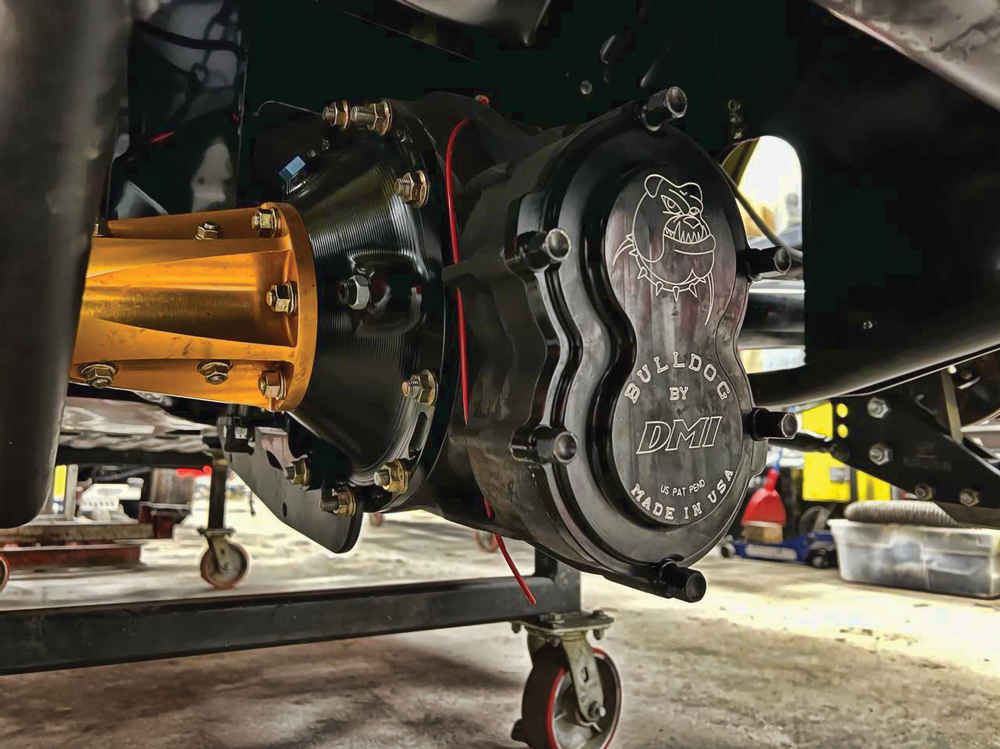
8. Overdrive
With the popularity of Drag Week and other combination street and race events, many racers are now adding overdrive capability to their cars to handle long trips at highway speeds with gear ratios that are optimized for competition.
One of the most popular ways to add overdrive is with a Gear Vendors unit, a separate gearbox that mounts behind the existing transmission. They’re robust enough to handle thousands of horsepower, and they can be fitted to practically any combination of car, engine, and transmission.
But our sources note that while this approach has proven effective, many racers are looking for lighter, more compact, self-contained solutions for adding overdrive to a drag car. “Incorporating the overdrive right in the transmission makes it a lot simpler,” said Rusty Sampsel of TCI Automotive, Ashland, Mississippi.
For this, many racers are starting to look at the General Motors 4L80E transmission, which is essentially a GM Turbo 400 with overdrive and electronic control. While at this point the 4L80E isn’t capable of handling the massive power that a race-prepped Turbo 400 or Powerglide can, the 4L80E nonetheless can be fortified to take more than 1,000 horsepower, which is adequate for many dual-purpose machines.
In addition, the 4L80E has a torque-converter clutch, which allows lockup at higher speeds. “Racers want a higher-stall-speed converter to get the motor up into its power range to launch better,” noted Sampsel. “But in older transmission designs, they’re stuck with that loose converter at the top end of the track. Electronic transmissions like the 4L80E have a clutch built into them that can actually lock up the converter like a manual transmission.”
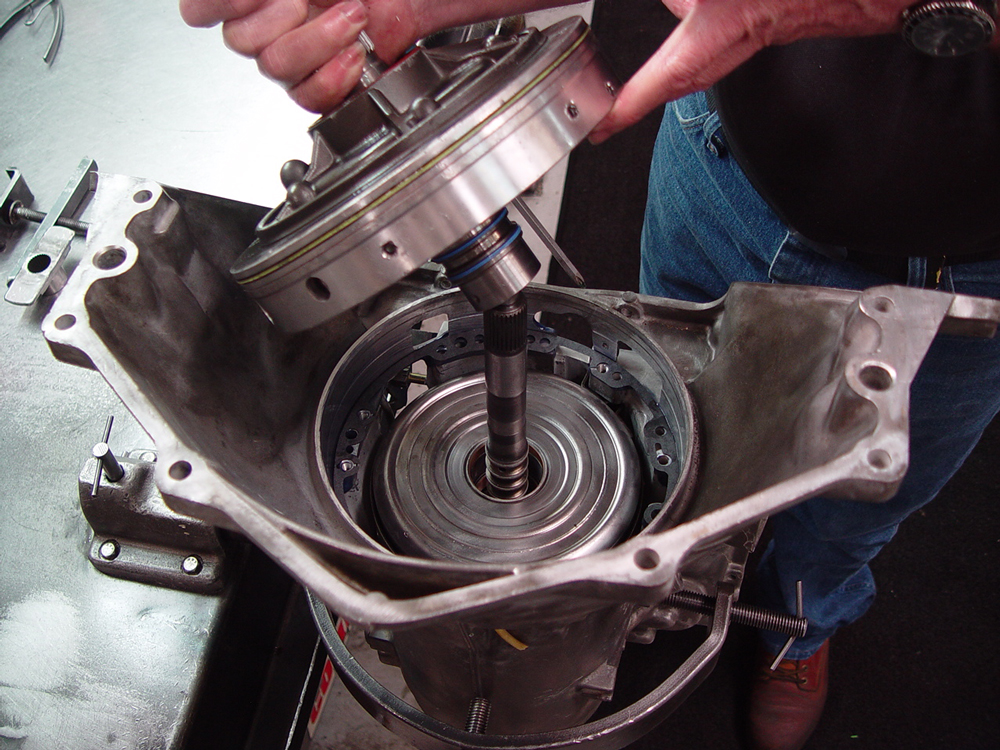
9. Transaxles in Stock Cars
To see one of the biggest changes in race-car drivelines of late, simply turn on the TV on Sunday afternoon and watch the 40-car NASCAR pack slug it out. This year, the top stock-car sanctioning body has done away with the traditional four-speed, H-shift-pattern transmission and separate rear differential configuration it has used for ages.
Now, all NASCAR Cup cars use a five-speed, sequential-shift transaxle design built by Xtrac. It’s a radical move that, along with other changes introduced this year, will significantly alter how these cars are set up and raced.
It also raises an interesting question: Will NASCAR’s introduction of a transaxle have any effect on other stock car series? It’s hard to say for sure. While we can assume that most stock car series aren’t eager for such a drastic change, the stock car community as a whole has always kept a close eye on the decisions that flow forth from Daytona.
10. Manual Transmissions
Although automatic transmissions are still the unrivaled standard for most all-out drag cars, manual transmissions are rapidly gaining popularity with the rise of autocross, track day, pro-touring, and dual-purpose drag events. Accordingly, manufacturers are introducing a wide range of new manual transmissions and the necessary parts to swap them into various cars.
Wharton Automotive Group’s Silver Sport Transmission brand specializes in building complete installation kits around the popular Tremec line of manual transmissions. “I definitely think there’s a trend back to manual transmission,” said Baldwin. “We’ve had some of our best years lately, which is a true testament that people really want to experience that feeling again. It’s what people are craving.”
Among the most popular manual transmissions being swapped into older vehicles now is Tremec’s new TKX 5-speed. It can handle up to 600 lb.-ft. of torque and features a compact, rounded case that makes it easier to fit into existing transmission tunnels.
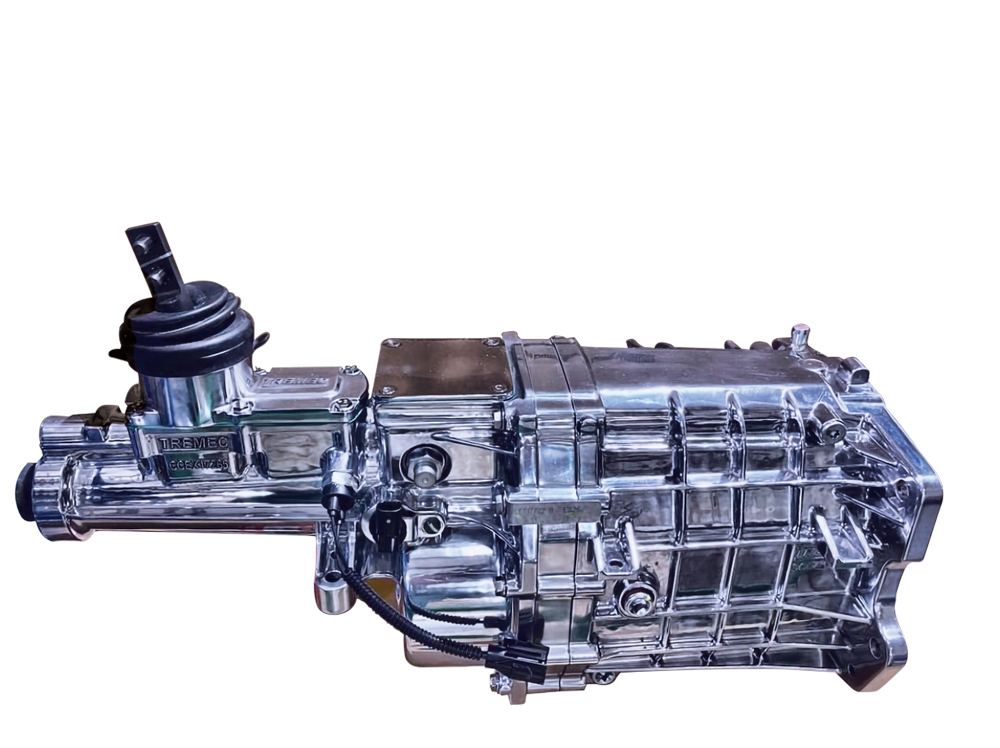
11. Dual-Disc Clutches
High-horsepower manual transmission cars traditionally have required clutches with massive spring pressure to prevent slippage. But that usually translates to herculean pedal force, making them a chore to drive on the street. Dual-disc clutches, by contrast, are designed to handle big horsepower and yet still have a relatively light pedal feel, making them increasingly popular for high-horsepower, dual-purpose cars.
“Having a 2,000-horsepower car now isn’t uncommon,” observed Baldwin. “But if you’re going to drive it on the street, you don’t want to have to push down on a super hard clutch. So we always recommend a twin-disc unit for that kind of power. When they move from single-disc to twin-disc, a lot of people say, ‘There’s no way this is the right clutch. It’s way lighter than what my single-disc clutch was.’”
12. Late-Model Muscle Cars
Although the popularity of Camaros, Challengers, Mustangs, and other late-model muscle cars certainly isn’t anything new at this point, one of our sources predicts that this market is going to get even hotter. Used examples of these cars are now dropping into a price range that’s affordable to average working-class racers. Many of those buyers will probably be more willing than the original owners to heavily modify them and drive them hard.
“These cars are getting to the age now where they’re in the hands of their second and third owner,” said TCI’s Sampsel. “This brings challenges for us. They’re kind of stuck with whatever drivetrain is in there—they can’t retrofit much. So we have to step up and try to accommodate those types of guys. They’re pushing the envelope from the engine standpoint. You have to start looking at the rest of the driveline because they’ll start finding the weak spots.”
13. EVs
Love ’em or hate ’em, EVs are here, and they’re probably only going to get more popular in motorsports. Their smooth, silent operation leaves some racers feeling as cold as a popsicle on Pluto, but no one can dispute the huge performance potential of EVs. Easily capable of topping 1,000 horsepower, an EV’s burly output is comparable to that of V8s with power adders. And, just like internal-combustion race cars, such brutal force punishes driveline components.
Many aftermarket manufacturers see exciting possibilities in the EV market for stronger components, as well as for ways to add greater satisfaction to the overall driving experience. “Last year at SEMA we sponsored an electric vehicle chassis,” said Baldwin. “We mated it with a Tremec transmission and a McLeod clutch. We want to showcase that you can still have that third-pedal fun in an electric vehicle.”
14. Gradual Evolution
While we always like to report big, dramatic breakthroughs, our sources for the most part emphasized the evolutionary nature of driveline development. The current state of driveline technology is largely the result of endless tiny improvements, one built on the other, which over time can yield radical transformations.
“Racers are always hoping there’s something out there that’s going to rotate the earth,” observed Ely of Diversified Machine. “At this point, though, it’s a lot of very minor improvements. I’m not saying there isn’t anything new out there—we’re always looking. But it’s a full-circle game. Most times, racers come right back to normal stuff.”
SOURCES
AL Driveline
aldriveline.com
Buzze Racing
buzzeracing.com
Coleman Racing Products
colemanracing.com
Diversified Machine
diversifiedracing.com
Driveshaft Shop
driveshaftshop.com
Dynamic Drivelines
dynamicdrivelines.com
McLeod Racing
mcleodracing.com
TCI Automotive
tciauto.com
 MEMBERSHIP LOGIN
MEMBERSHIP LOGIN JOIN PRI
JOIN PRI
